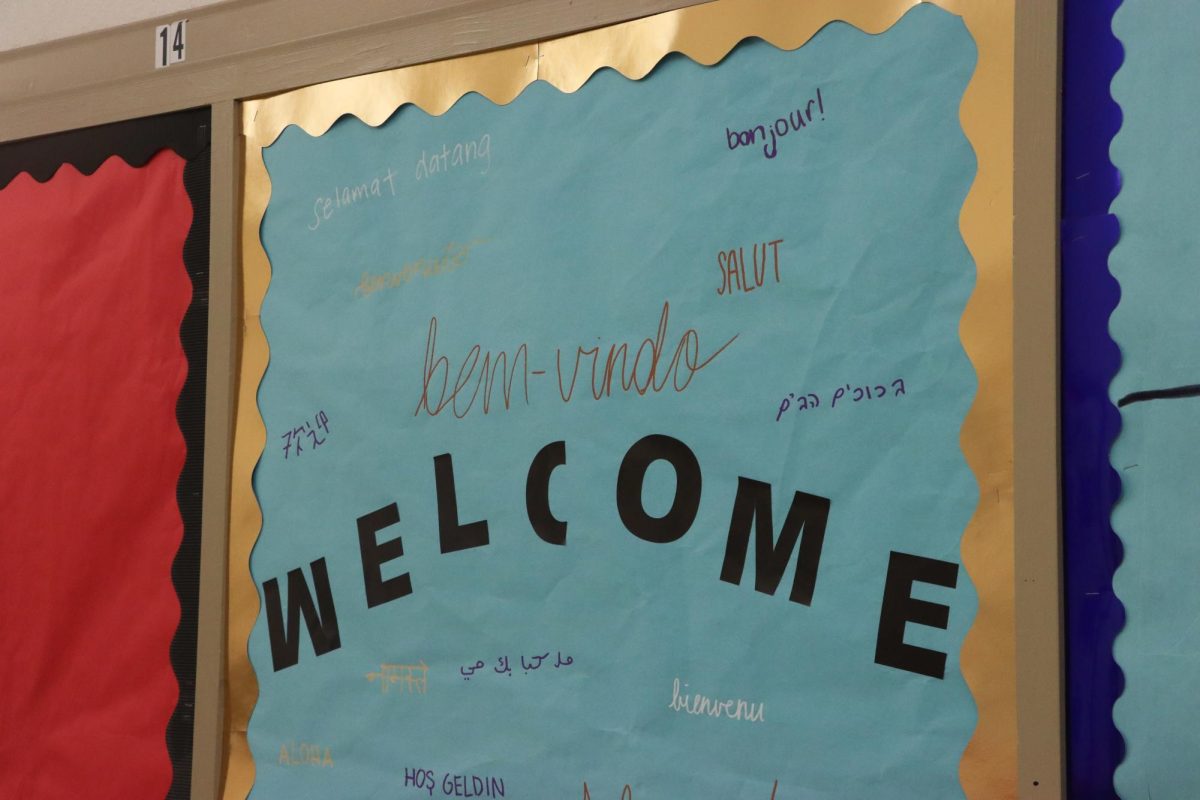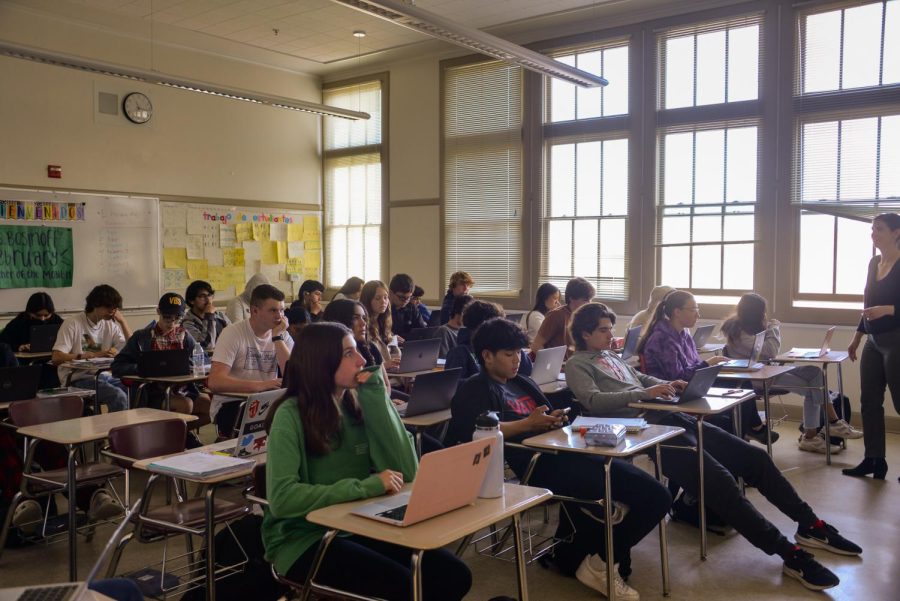We need more options in the language department
Students sit quietly in Mrs. Bosinoff’s Spanish 1 class on April 6.
May 15, 2023
According to Newsdle, as of 2022, 91% of U.S. high schools offer a foreign language course with 75% of language students being enrolled in Spanish, followed by a significant drop of only 15% being enrolled in French. With over 6.5 million students studying Spanish at high schools, it is by far the most-taught language in the country.
In my experience, the languages taught at Burlingame lack diversity since they focus solely on Spanish. With five Spanish teachers and only one teacher each for Chinese and Italian classes, it is clear that Spanish is valued more than the other two languages.
However, rather than focusing on three — but really, just one — language, I think offering courses in French, Japanese, German and even American Sign Language would encourage students to branch out away from English.
At my elementary school, the three languages taught were Mandarin, Tamil and Malaysian, all catering to the native languages of the students. Since Spanish is an extremely common mother tongue, it is no wonder why public schools prioritize it in their language curriculum. However, this does not mean we should completely ignore other languages. If more diverse languages were made available to students, I think there would be an increase in student interest and commitment to learning languages other than English.
It’s not hard to see that students are interested in studying a plethora of foreign languages — just look at some of the clubs on campus. In the French Club, for instance, students attempt to immerse themselves in French culture and try to gain an understanding of the language. Yet, club members only have the opportunity to practice in person once or twice a month, whereas language classes meet three times a week.
Students often do not bother to actually learn a language since schools don’t necessarily prioritize the conversation and speaking factors. Instead, students just learn vocabulary words and simple terms, leading to a lack of student interest and involvement.
Sure, students can theoretically learn languages through apps such as Duolingo or Babbel, but nothing compares to being taught by an actual teacher.
Especially in a school setting, the idea of learning a new language simply becomes a subject to study for rather than a skill to acquire. Students expect their teachers to just transfer all their knowledge, which hinders students’ interest in actually learning a language. They start viewing the process of learning as memorizing even though it is best for them to learn how to apply the language to their daily lives.
Often, students don’t know why they are truly taking a language course. For many, it all comes down to credit requirements, and students tend to study a language because they feel like they have to.
With more diverse options, I believe that more students would pursue languages out of their own interest, not just to check a box or as a graduation requirement.















































